GEORGIE'S HUT (CHINESE MARKET GARDEN)
JEFFCOTT ROAD DONALD, BULOKE SHIRE
-
Add to tour
You must log in to do that.
-
Share
-
Shortlist place
You must log in to do that.
- Download report





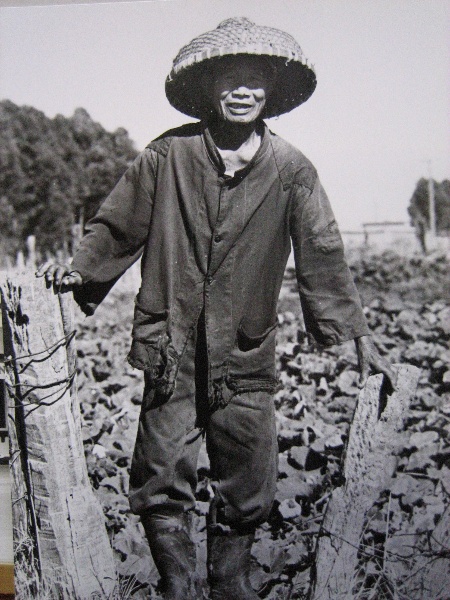
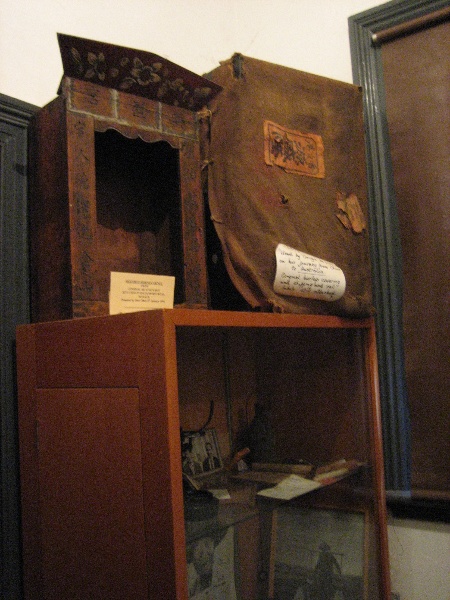
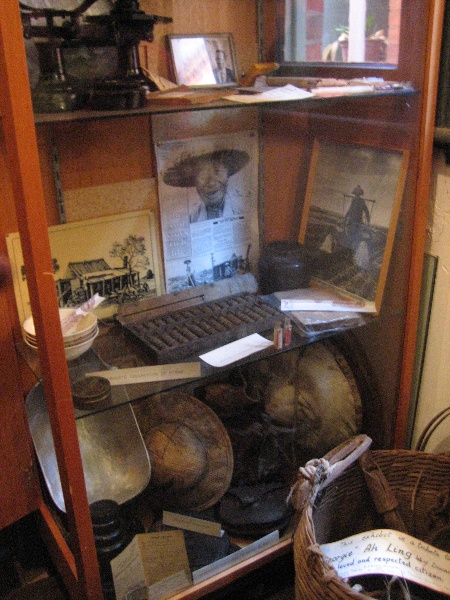
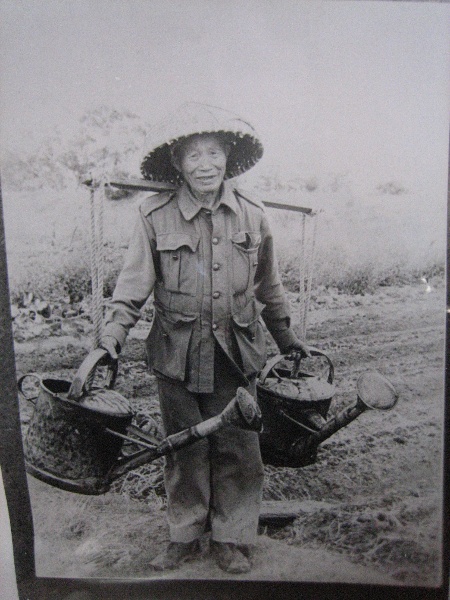
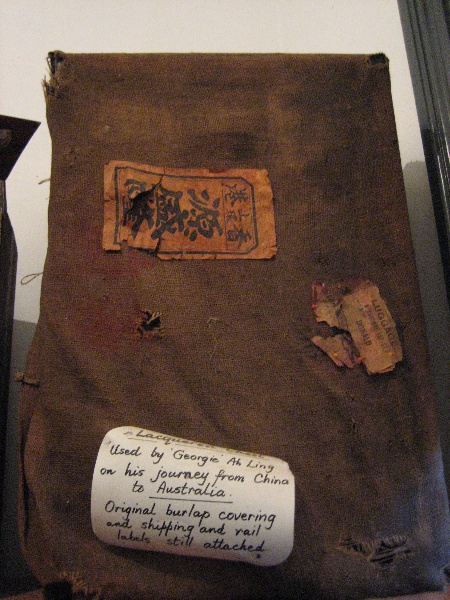
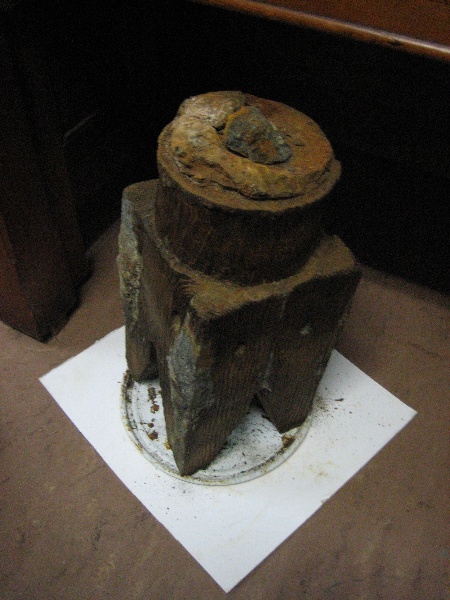
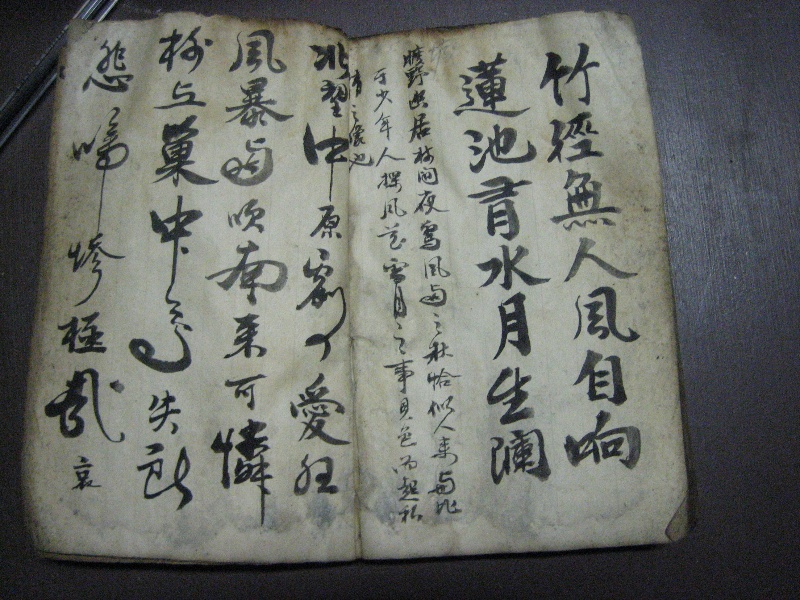
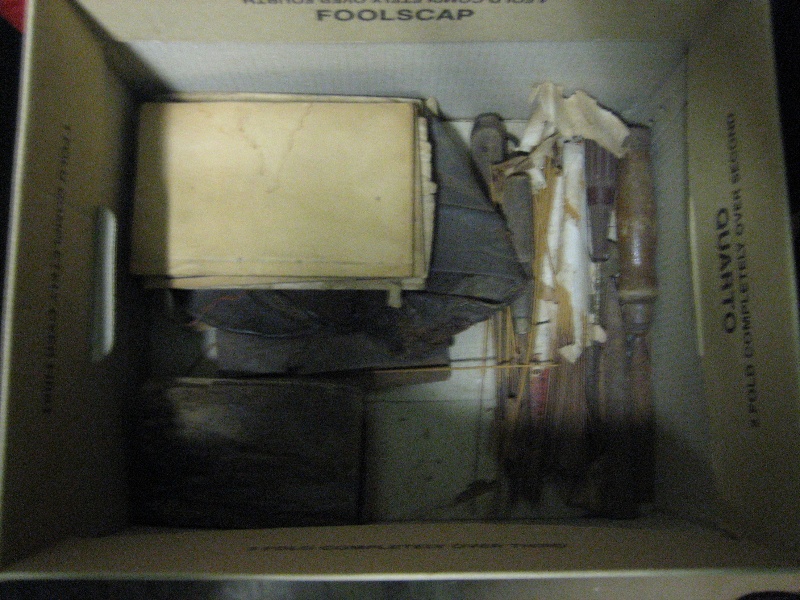
Statement of Significance
What is Significant?
A Chinese market garden was established on Jeffcott Road in Donald during the late 1920s on a 10 acre plot of land leased by Low Boa Ling from a local farmer. The market garden operated continually until the 1980s. During the last half of the nineteenth century, Chinese-run market gardens operated in Donald along the banks of the Richardson River at the northern end of the township. By the time Low Boa Ling established the garden in the 1920s there were no other gardens in the area.
Low Boa Ling (also referred to as Harry Ah Ling), a traditional Chinese medical practitioner, arrived in Australia early in 1900 to work as a gardener beside his father, Liu Xi Pan, in Boort. Liu Xi Pan, had arrived during the late 1890s to assist his father, Lui Wei Ngui, in market garden operations around Ararat, before moving to Ballarat and then to Boort. In 1936 George Ah Ling (1884-1987), affectionately known as Georgie, but also legally registered as Lau San or Ah Foo Ah Wah, took over the operation on Jeffcott Road from his cousin, Low Boa Ling.
Georgie Ah Ling grew vegetables including leafy greens, pumpkins, brown onions and tomatoes, and bought fruit from the markets in Melbourne and Ballarat to resell locally. Georgie watered the gardens with two large watering cans suspended from a yoke around his shoulders. The cans were filled from an irrigation or holding channel. Water was pumped from a dam, constructed during the late 1920s, to the holding channel located in front of the house site.
Produce from the gardens was delivered in crates transported by a horse-drawn wagon. Many packing crates remain on site, along with other items including furniture, domestic and garden tools, and clothing. Several items were removed after Georgie's death and are now located at the Donald and District Archives, Donald Agricultural Museum and the Police Court Museum in Donald, under the care of the History and Natural History Group of the Donald Music Literature and Art Society Inc.
Georgie's Hut is a simple three-roomed, timber-framed, weatherboard clad hut with corrugated iron roofing and was built c.1927-28. The western room's hessian-lined ceiling has deteriorated to expose the timber trusses, which can also be seen in the central and eastern rooms. The walls of the western room are lined in sections with torn Chinese and Victorian newspapers. The floors of the central and western rooms are covered by deteriorated floorboards and the kitchen, to the east, has a packed earth floor. A fireplace with brick foundations and a chimney constructed of used kerosene cans which abutted the kitchen at the eastern end of the house was removed following Georgie's death.
Out-buildings include crudely constructed timber framed, corrugated iron and timber clad open-fronted packing and storage sheds. Bamboo lines the exterior of the sheds at the rear and was used in the garden to provide stakes for vegetables. A rubbish dump with remains of a cart, corrugated iron sheeting, kerosene cans, Chinese ceramics and other items is located at the rear of the hut and other artefacts are scattered throughout the site.
Why is it Significant?
Georgie's Hut (Chinese Market Garden) is of archaeological, historical and social significance to the State of Victoria.
How is it Significant?
Georgie's Hut (Chinese Market Garden) is of historical significance as an example of the Chinese market garden industry which was once widespread throughout Victoria.
The site is unique with surviving intact fabric; most historic Chinese market garden sites in Victoria have been destroyed through development or remain only as archaeological sites.
The collection of objects that remain at Georgie's Hut (Chinese Market Garden) and items associated with the site held at Donald and District Archives, Donald Agricultural Museum and the Police Court Museum are of historical significance and provide information about the market garden operations and domestic life on the site.
Georgie's hut and garden is historically and socially important for its link to members of the Chinese community in Victoria, dating from the gold rush period. It is an example of the presence of the Chinese in communities throughout Victoria and marks the end of a period when Chinese market gardens were essential to urban and district food supply.
The site is of archaeologically significant for its potential to produce artefacts and information relating to the occupation of the site and agricultural operations.
-
-
GEORGIE'S HUT (CHINESE MARKET GARDEN) - Plaque Citation
A market garden was established on this site in the late 1920s and was operated by Georgie Ah Ling from the 1930s until the 1980s. It was one of Victoria's last Chinese market gardens.
GEORGIE'S HUT (CHINESE MARKET GARDEN) - Permit Exemptions
General Exemptions:General exemptions apply to all places and objects included in the Victorian Heritage Register (VHR). General exemptions have been designed to allow everyday activities, maintenance and changes to your property, which don’t harm its cultural heritage significance, to proceed without the need to obtain approvals under the Heritage Act 2017.Places of worship: In some circumstances, you can alter a place of worship to accommodate religious practices without a permit, but you must notify the Executive Director of Heritage Victoria before you start the works or activities at least 20 business days before the works or activities are to commence.Subdivision/consolidation: Permit exemptions exist for some subdivisions and consolidations. If the subdivision or consolidation is in accordance with a planning permit granted under Part 4 of the Planning and Environment Act 1987 and the application for the planning permit was referred to the Executive Director of Heritage Victoria as a determining referral authority, a permit is not required.Specific exemptions may also apply to your registered place or object. If applicable, these are listed below. Specific exemptions are tailored to the conservation and management needs of an individual registered place or object and set out works and activities that are exempt from the requirements of a permit. Specific exemptions prevail if they conflict with general exemptions. Find out more about heritage permit exemptions here.Specific Exemptions:General Conditions: 1. All exempted alterations are to be planned and carried out in a manner which prevents damage to the fabric of the registered place or object. General Conditions: 2. Should it become apparent during further inspection or the carrying out of works that original or previously hidden or inaccessible details of the place or object are revealed which relate to the significance of the place or object, then the exemption covering such works shall cease and Heritage Victoria shall be notified as soon as possible. Note: All archaeological places have the potential to contain significant sub-surface artefacts and other remains. In most cases it will be necessary to obtain approval from the Executive Director, Heritage Victoria before undertaking any works that have a significant sub-surface component. General Conditions: 3. If there is a conservation policy and plan endorsed by the Executive Director, all works shall be in accordance with it. Note: The existence of a Conservation Management Plan or a Heritage Action Plan endorsed by the Executive Director, Heritage Victoria provides guidance for the management of the heritage values associated with the site. It may not be necessary to obtain a heritage permit for certain works specified in the management plan. General Conditions: 4. Nothing in this determination prevents the Executive Director from amending or rescinding all or any of the permit exemptions. General Conditions: 5. Nothing in this determination exempts owners or their agents from the responsibility to seek relevant planning or building permits from the responsible authorities where applicable. Regular Site Maintenance : The following site maintenance works are permit exempt under section 66 of the Heritage Act 1995: a) regular site maintenance provided the works do not involve the removal or destruction of any significant above-ground features or sub-surface archaeological artefacts or deposits; b) the maintenance of an item to retain its conditions or operation without the removal of or damage to the existing fabric or the introduction of new materials; c) cleaning including the removal of surface deposits, organic growths, or graffiti by the use of low pressure water and natural detergents and mild brushing and scrubbing; d) repairs, conservation and maintenance to plaques, memorials, roads and paths, fences and gates and drainage and irrigation. e) the replacement of existing services such as cabling, plumbing, wiring and fire services that uses existing routes, conduits or voids, and does not involve damage to or the removal of significant fabric. Note: Surface patina which has developed on the fabric may be an important part of the item's significance and if so needs to be preserved during maintenance and cleaning. Note: Any new materials used for repair must not exacerbate the decay of existing fabric due to chemical incompatibility, obscure existing fabric or limit access to existing fabric for future maintenance. Repair must maximise protection and retention of fabric and include the conservation of existing details or elements. Fire Suppression Duties : The following fire suppression duties are permit exempt under section 66 of the Heritage Act 1995, a) Fire suppression and fire fighting duties provided the works do not involve the removal or destruction of any significant above-ground features or sub-surface archaeological artefacts or deposits; b) Fire suppression activities such as fuel reduction burns, and fire control line construction, provided all significant historical and archaeological features are appropriately recognised and protected; Note: Fire management authorities should be aware of the location, extent and significance of historical and archaeological places when developing fire suppression and fire fighting strategies. The importance of places listed in the Heritage Register must be considered when strategies for fire suppression and management are being developed. Weed and Vermin Control : The following weed and vermin control activities are permit exempt under section 66 of the Heritage Act 1995, a) Weed and vermin control activities provided the works do not involve the removal or destruction of any significant above-ground features or sub-surface archaeological artefacts or deposits; Note: Particular care must be taken with weed and vermin control works where such activities may have a detrimental affect on the significant fabric of a place. Such works may include the removal of ivy, moss or lichen from an historic structure or feature, or the removal of burrows from a site that has archaeological values. It is possible that some introduced plant species on the site may have heritage significance. Please contact Heritage Victoria before undertaking weed removal. Landscape Maintenance : The following landscape maintenance works are permit exempt under section 66 of the Heritage Act 1995, a) landscape maintenance works provided the activities do not involve the removal or destruction of any significant above-ground features or sub-surface archaeological artefacts or deposits; b) watering, mowing, top-dressing and fertilising necessary for the continued health of plants, without damage or major alterations to layout, contours, plant species or other significant landscape features;c) tree surgery by a qualified horticulturalist or tree surgeon necessary for the health of those plants. Public Safety and Security : The following public safety and security activities are permit exempt under section 66 of the Heritage Act 1995, a) public safety and security activities provided the works do not involve the removal or destruction of any significant above-ground structures or sub-surface archaeological artefacts or deposits; b) the erection of temporary security fencing, scaffolding, hoardings or surveillance systems to prevent unauthorised access or secure public safety which will not adversely affect significant fabric of the place including archaeological features; c) development including emergency stabilisation necessary to secure safety where a site feature has been irreparably damaged or destabilised and represents a safety risk to its users or the public. Note: Urgent or emergency site works are to be undertaken by an appropriately qualified specialist such as a structural engineer, or other heritage professional. Signage and Site Interpretation : The following Signage and Site Interpretation activities are permit exempt under section 66 of the Heritage Act 1995, a) signage and site interpretation activities provided the works do not involve the removal or destruction of any significant above-ground structures or sub-surface archaeological artefacts or deposits; b) the erection of non-illuminated signage for the purpose of ensuring public safety or to assist in the interpretation of the heritage significance of the place or object and which will not adversely affect significant fabric including landscape or archaeological features of the place or obstruct significant views of and from heritage values or items; c) signage and site interpretation products must be located and be of a suitable size so as not to obscure or damage significant fabric of the place; d) signage and site interpretation products must be able to be later removed without causing damage to the significant fabric of the place; Note: The development of signage and site interpretation products must be consistent in the use of format, text, logos, themes and other display materials. Note: Where possible, the signage and interpretation material should be consistent with other schemes developed on similar or associated sites. It may be necessary to consult with land managers and other stakeholders concerning existing schemes and strategies for signage and site interpretation. Mineral Exploration : The following Mineral Exploration activities are permit exempt under section 66 of the Heritage Act 1995, a) mineral Exploration activities provided the works do not involve the removal or destruction of any significant above-ground features or sub-surface archaeological artefacts or deposits; b) preliminary non-intrusive exploration, including geological mapping, geophysical surveys, and geochemical sampling and access to shafts and adits; c) advanced forms of exploration (drilling), including the location of drill pads and access tracks where this has been the subject of on-site negotiation and agreement with representatives of Heritage Victoria, DSE and Parks Victoria, and where all significant historic site features have been identified and protected as part of an approved work plan. Minor Works : Note: Any Minor Works that in the opinion of the Executive Director will not adversely affect the heritage significance of the place may be exempt from the permit requirements of the Heritage Act. A person proposing to undertake minor works may submit a proposal to the Executive Director. If the Executive Director is satisfied that the proposed works will not adversely affect the heritage values of the site, the applicant may be exempted from the requirement to obtain a heritage permit. If an applicant is uncertain whether a heritage permit is required, it is recommended that the permits co-ordinator be contacted.GEORGIE'S HUT (CHINESE MARKET GARDEN) - Permit Exemption Policy
Permit Policy:
The purpose of the permit exemptions is to allow works that do not impact on the heritage significance of the place to occur without the need for a permit. Works other than those mentioned in the permit exemptions may be possible but will require either the written approval of the Executive Director or permit approval.
The cultural heritage significance of Georgie's Hut (Chinese Market Garden) lies in its archaeological, historical and social values. The registered land has historical archaeological significance for its potential to provide evidence of the use and occupation of the site during the twentieth century. Any works affecting the disturbance of below ground components of the site and surface deposits including scattered artefacts, the dump and the dam are subject to the Executive Director's approval.
The addition of new buildings or changes to existing structures on the registered land will be subject to permit application. Stabilisation works are required for the hut and packing sheds and are subject to the Executive Director's approval.
There are significant items associated with Georgie's Hut (Chinese Market Garden), as listed in the Georgie Ah Ling Collection: Inventory of items held at Donald and District Archives, Donald Agricultural Museum, Police Court Museum and located on site at Georgie's Hut (Chinese Market Garden), dated June 2007. It is desirable that a Conservation Management Policy is prepared for this collection. The removal or relocation of any items requires the approval of the Executive Director.
A collection of items which have not been recorded in an inventory remain on site. A detailed inventory of the objects located at Georgie's Hut (Chinese Market Garden) is encouraged once stabilisation works are completed. It is desirable that a Conservation Management Policy is prepared for this collection. Once an endorsed CMP has been implemented, the object type may be subject to a review to enable a class of standard, or specific, permit exemptions to be granted.
-
-
-
-
-
GEORGIE'S HUT (CHINESE MARKET GARDEN)
 Victorian Heritage Register H0873
Victorian Heritage Register H0873
-
'YARROLA'
 Boroondara City
Boroondara City -
1 Bradford Avenue
 Boroondara City
Boroondara City
-
-










